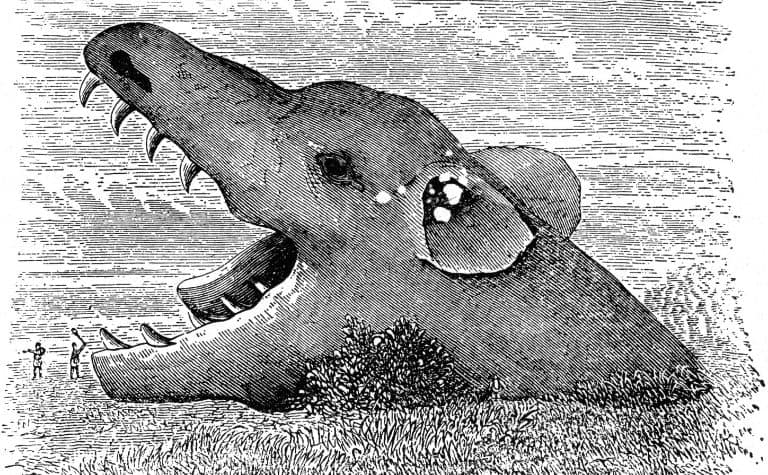Norse mythology from Scandinavia continues to fascinate modern audiences. People love to learn about Norse gods like Odin, Thor, and Freya, and their interactions with humans.
Christianity has also been influential in the Northern European region. So is Norse mythology older than Christianity?
Norse Mythology is older than Christianity when its roots are traced back to the oral stories of the ancient Germanic culture in the Bronze Age.
Christianity, which is approximately 2,000 years old, is a continuation of Judaism, the writings of which date to the Bronze Age as well.
Where did Norse mythology come from? What hard evidence exists of its origins? Who was the first Norse god? Keep reading to learn more.
Also, see The Giants of Norse Mythology: Who Are They? to learn more.

How Old is Norse Mythology?
The exact origins of Norse mythology are lost to history. The first storytellers and their followers didn’t keep written records like people after them did.
Historians attempt to piece together early Norse thought from sources that date much later than their creation.
Sometimes the evidence leads to conclusions that historians are confident in, but other times, because of limited data, it only leads to best guesses.
Evidence from the 12th century: Some of the earliest hard evidence of Norse mythology comes from the 12th century A.D. Norse mythology is much older than the 12th century, but little physical evidence has survived from previous centuries.
In one example, the carvings on a church depict Christian images as well as Norse gods. [1] The structure may have been a Norse temple that later became a Christian church. (Also see 25 Norse Gods to Know)
The carvings may reflect that Scandinavians first added Christian figures to their Norse pantheon, as opposed to completely replacing their traditional belief system with a new one.
Scandinavians may also have had economic motivations because Christians were more likely to trade with people who shared their views.
However, history reveals that, in time, Christianity supplanted Norse mythology as the dominant worldview in the region.
Bronze Age hypothesis: Some historians suspect that Norse mythology originated in the Bronze Age, which covers approximately the three millenniums prior to the birth of Jesus Christ.
It’s during this time, though exactly when is uncertain, that Germanic beliefs and practices shaped what is known as Norse mythology today.
For example, Germanic tribes recognized a pantheon of gods to whom they made open-air sacrifices.
Also, see Norse Mythology vs Greek Mythology: What’s the Difference?
Who was the First Norse god?
The first god to appear in the Norse creation myth is Ymir. [2] He was a giant who lived in the abyss of Ginnungagap.
According to the myths, he was born in fire and ice. He is described as a hermaphrodite who was able to conceive the other gods asexually. They came from the sweat of his legs and armpits that formed when he was sleeping.
Was Ymir good or evil? Over time, Ymir would turn into an evil being. Because of this, Odin, the chief of the gods, killed him.
Ymir’s body was used to make the world. It’s believed that his bones were used to make the mountains, and the sea was created from his sweat.

Is Asatru Older Than Christianity?
While the establishment of Asatru might be relatively recent, the beliefs it embraces are much older. Much of the images and myths that are taught in Asatru come from the Viking period.
However, as discussed above, these myths have their roots in ancient practices. Some elements likely stretched back to the Bronze Age. (Also see Why Did the Vikings Worship Odin?)
Most of the core beliefs of Asatru came from Germanic culture. Germanic tribes date to the 9th Century AD [3], though some believe that the Norse ideas date back even further to the Bronze Age.
If one approaches history in this way, then Asatru’s beliefs predate Christianity.
How old is Christianity? Jesus of Nazareth lived approximately 2,000 years ago. However, many Christian beliefs, like monotheism, are rooted in the Hebrew Bible or, as Christians refer to it, the Old Testament.
So while Christianity is 2,000 years old, many of its core convictions are 3,000 to 4,000 years old. (Also see The Yggdrasil: The Sacred Ash Tree)
An Old Testament example: For another example, consider the sacrificial system of the ancient Hebrews, as described in the book of Leviticus and practiced through the Old Testament.
Israelites sacrificed animals and gave other offerings to ultimately be in a righteous relationship with God.
In the New Testament, Christ is called the “Lamb of God” (John 1:29) and sacrificed his life so that people could be in a righteous relationship with God.
What is the history of Asatru’s beliefs? While Asatru focuses on ancient beliefs, it has a modern origin.
Scandinavians collectively abandoned the worldview that Asatru beliefs are based on approximately 1,000 years ago in favor of Christianity, which was growing rapidly in the region.
However, there was a remnant of people who kept the ancient beliefs alive, holding ceremonies in secret. (Also see The Norse Tree of Life: A Fascinating Viking Symbol)
When was “Asatru” founded? The Asatru religion was officially established in the 1970s. [4] The name is a translation of the ancient Scandinavian word for “belief in the gods.”
Sometimes a practitioner calls themselves a heathen or pagan.
At the time, it was formed as a rejection of Christianity in favor of ancient beliefs. It also appealed to people as a way to reconnect with nature or to learn more about their heritage.
Is Asatru growing anywhere in the world? Since it was re-introduced in the 1970s, the popularity of Asatru has started to increase.
It is the fastest-growing religion in Iceland. It’s estimated that memberships have increased by 244 percent since 2007. [5]
As a result, it is the sixth-largest religion in Iceland. This explosion of interest and growth has been mirrored by various other countries around the world.
As a result, the first pagan temple since 1000 AD is expected to open soon.
Also, see 10 Goddesses to Know in Norse Mythology to learn more.
Where Did Norse Mythology Come From?
Trying to establish the exact origins of the Norse myths has proven to be a difficult task for historians, though some believe they are starting to understand the way that these ideas were converted into myth.
Oral stories: Norse mythology likely started as spoken stories that were passed down from one generation to the next.
There are various runestones, some of which still exist today, that are illustrated based on the most well-known parts of the myths. Later, these stories and poems were converted into text.
Artistic poems: There is some evidence of skaldic poems, which were performed at court to entertain the king.
There are also older poems. However, these are something that modern archaeologists struggled to understand because the writers assumed that readers were familiar with the context that surrounded the stories, so they didn’t provide a lot of explanation.
The value of the Edda: Because of the lack of original sources, most people rely on the Edda for information. [6] The Edda was composed to convert these old stories and myths to text. These were based on the Codex Regius.
The Edda was written in the 13th Century AD. This book is split into two parts. The Younger Edda contains tips on writing poetry, as well as the visit that Gylfi made to Asgard.
There the gods told him about their legends. The second part of the book is known as Elder Edda. This contains the oldest myths and poems. (Also see Valhalla vs. Asgard: What’s the Difference?)
Conclusion
Norse mythology and Christianity have fascinating and intersecting histories. While it’s easier to date the hard evidence that exists for each belief system, it’s more challenging to be sure of the precise time of their birth because each is rooted in oral stories that are likely from the Bronze Age.
Also see Freyja, Norse Goddess of Love, Witchcraft, and War.
References:
[1] Source
[2] Source
[3] Source
[4] Source
[5] Source
[6] Source
